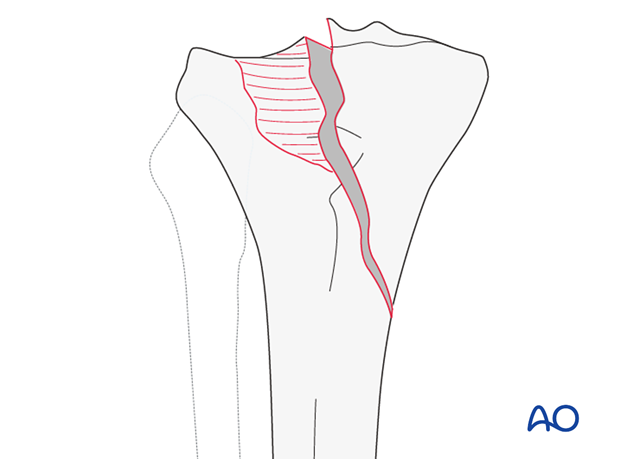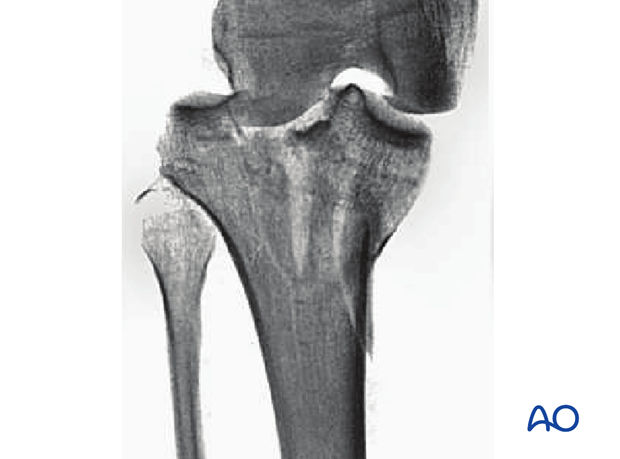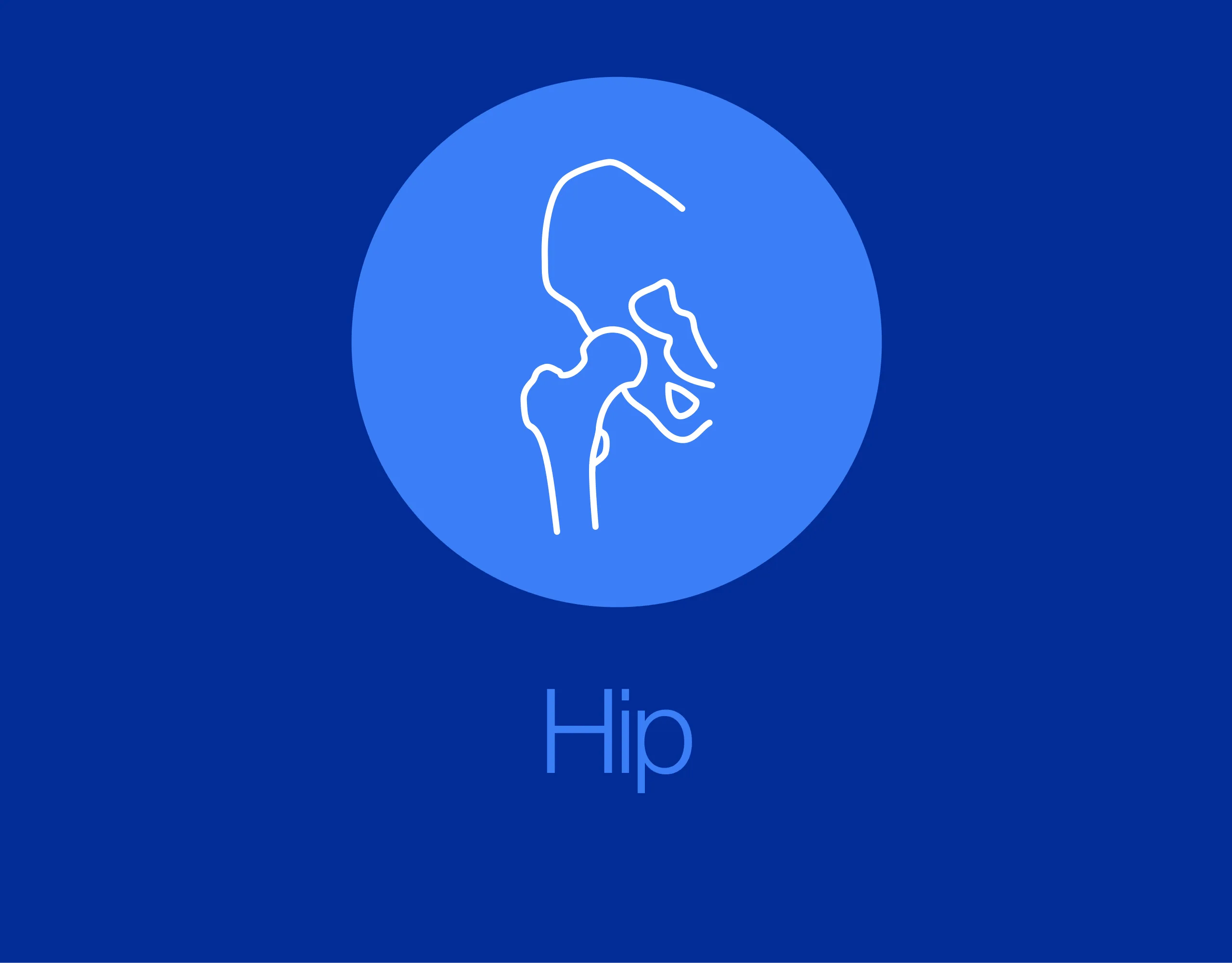Partial articular fracture, split-depression
Introduction
Partial articular fractures with a split-depression are classified by the AO/OTA as 41B3 fractures. Preoperative imaging studies are crucial to determine the extent and location of the impacted articular surface. Associated injuries such as ligamentous injuries or meniscal tears may be present and must be considered separately.
Lateral plateau fracture
The lateral plateau split depressions are classified by the AO/OTA as 41B3.1 fractures.
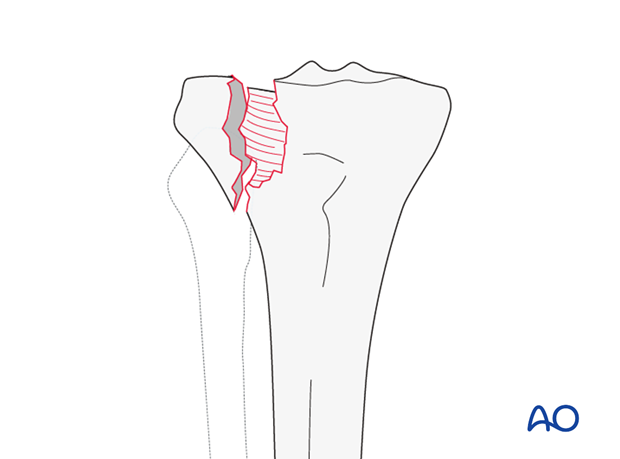

Medial plateau fracture
The medial plateau split depressions are classified by the AO/OTA as 41B3.2 fractures. They are rare and often occur as a result of high-energy force. They may be associated with meniscal tears, ligament rupture, neurovascular lesions, and compartment syndrome.
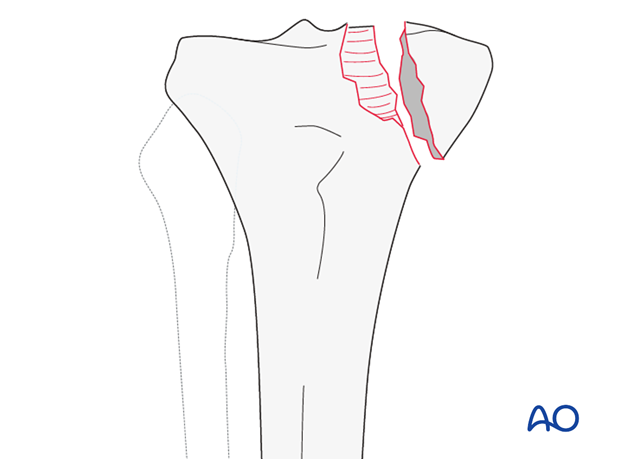
Oblique split depression, involving the tibial spines and one of the surfaces
Oblique split depression, involving the tibial spines and one of the surfaces is classified as a 41B3.3 fracture.
Treatment of this fracture has many pitfalls. Besides the unstable large medial fragment, a significant posterolateral articular surface depression is quite common. The ACL and lateral meniscus are frequently injured.
